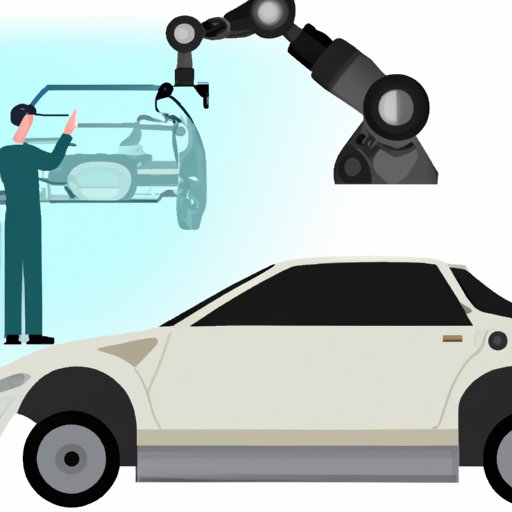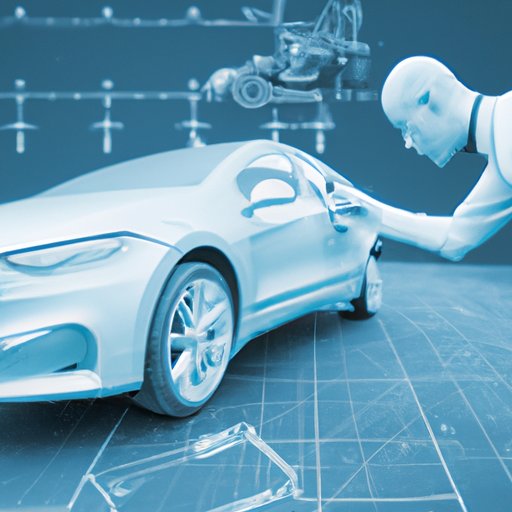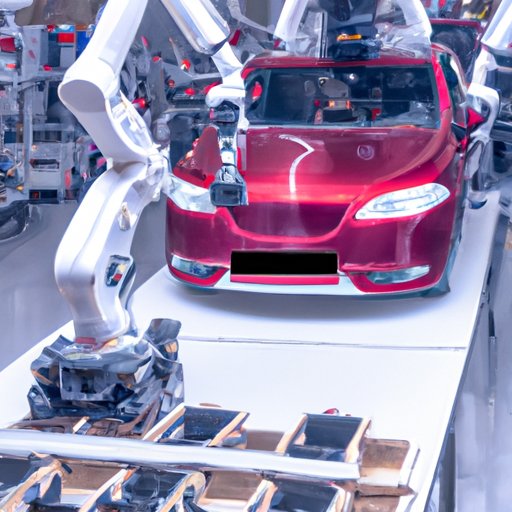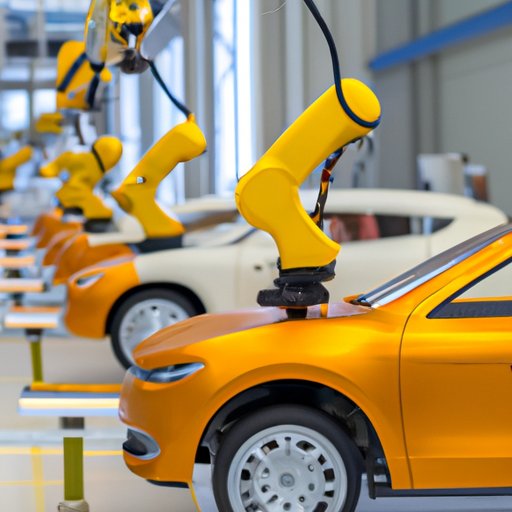Introduction
Robots are increasingly being used in car manufacturing to improve production processes, reduce costs, and enhance safety. Robotics is the use of automated machines, such as robots, to carry out a variety of tasks in the automotive industry. Automated processes are utilized to streamline production and ensure that vehicles are produced with the highest quality standards. This article will explore the role of robotics in car manufacturing, examining the benefits of robot-based automation and analyzing cost savings achieved through robotic automation.

Exploring the Role of Robots in Enhancing Quality Control in Car Production
Robots play an important role in enhancing quality control in car production. According to research by the Institute for Advanced Automotive Propulsion Systems (IAAPS), “Robotics has been shown to be beneficial in improving the quality of car parts and the overall performance of cars.” Robotic systems can be used to inspect parts and components more effectively than manual inspection, ensuring that only high-quality products are produced. Additionally, robots can be programmed to detect defects in parts that may not be visible to the human eye, allowing for early detection and rectification.
Robots can also be used to implement quality assurance protocols. For instance, robots can be programmed to carry out tests on components and materials to ensure that they meet the required standards. This can be beneficial in reducing the cost of reworking defective parts and ensuring that only the highest quality products reach the market.
Examining the Benefits of Robot-Based Automation in Car Manufacturing
Robot-based automation has several benefits for car manufacturers. Firstly, robots can significantly improve efficiency and productivity in car production. According to a study conducted by the International Federation of Robotics (IFR), “Robots are able to work faster and more accurately than humans, allowing for increased output and reduced cycle times. This can lead to significant cost savings for car manufacturers.”
In addition to improved efficiency and productivity, robots can also help to enhance safety in car production. By taking on hazardous or repetitive tasks, robots can reduce the risk of injury to employees and help to create a safer working environment. Furthermore, robots can help to reduce labor costs, as they require fewer staff to operate them than traditional production lines.

Investigating the Impact of Robotics on Car Manufacturing Efficiency
Robotics can also have a positive impact on car manufacturing efficiency. The use of robots can reduce waste and defects in production, as they can be programmed to detect errors quickly and accurately. Additionally, robots can improve accuracy and precision in car production, as they are able to repeat the same task over and over again with greater consistency than humans.

Evaluating the Advantages of Robotic Systems in Car Assembly Lines
Robots can also offer several advantages in car assembly lines. Firstly, robots can provide increased flexibility and adaptability. They can be easily reprogrammed to carry out different tasks, allowing for quick adaptation to changing market demands. Secondly, robots can offer speed and consistency in car assembly processes. Robots are able to move quickly and accurately, enabling them to assemble components faster than humans.
Analyzing Cost Savings Achieved Through Robotic Automation in Car Manufacturing
Robotic automation can also lead to significant cost savings for car manufacturers. Firstly, capital investment costs can be reduced, as robots require less initial investment than traditional production lines. Additionally, labor costs can be reduced, as robots require fewer staff to operate them than traditional production lines. These cost savings can help car manufacturers to remain competitive in the global market.
Conclusion
Robots can offer numerous benefits to car manufacturers, from enhanced quality control and improved efficiency to cost savings. They can be used to improve safety in car production, reduce waste and defects, and increase flexibility and adaptability. As the use of robotics continues to grow in car manufacturing, it is likely that more cost savings will be achieved and further improvements in production efficiency will be seen.
In conclusion, robotics has become an essential part of car manufacturing, providing numerous benefits for car manufacturers. From improved quality control and increased efficiency to cost savings, robots have become an invaluable tool for car production. As the use of robotics continues to increase, it is likely that further improvements in car manufacturing will be seen.
(Note: Is this article not meeting your expectations? Do you have knowledge or insights to share? Unlock new opportunities and expand your reach by joining our authors team. Click Registration to join us and share your expertise with our readers.)
